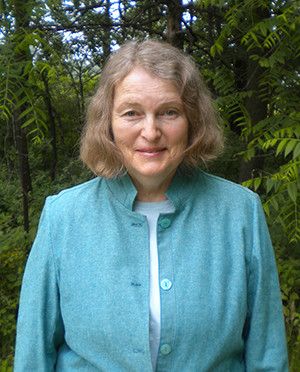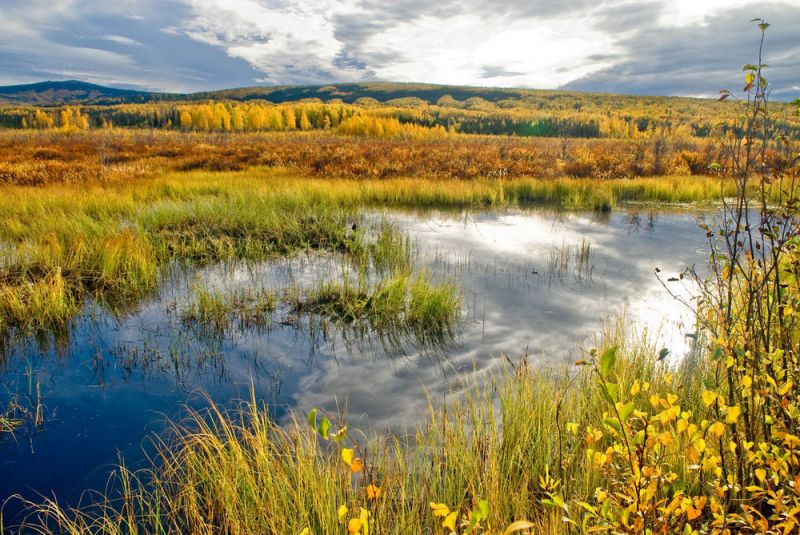When We Can Say a Wetland is Dead?
Published on by Water Network Research, Official research team of The Water Network in Academic
The Tehran Times conducted an interview with Joy B. Zedler, Professor of Botany and Aldo Leopold Chair in Restoration Ecology from Wisconsin University.
 Professor Zedler works on restoration ecology; wetland ecology; reestablishment of rare plants; interactions of native and exotic species; adaptive management and so on.
Professor Zedler works on restoration ecology; wetland ecology; reestablishment of rare plants; interactions of native and exotic species; adaptive management and so on.
Q: Why people, especially in developing countries, forgot the importance of wetlands in human life? And why they have to change their manner?
A: People have moved to cities and retain few connections with wetlands, except perhaps in parks and scenic views. Most people do not know that wetlands clean the water and the air and store carbon and support biodiversity.
Nor do they make the connection between those “ecosystem services” and their own well-being. A few schools are beginning to take children into wetlands to see frogs and dragonflies.
Elementary school children are brought to our UW-Madison Arboretum to learn about restoration and collect water samples from a shallow pond. But these are rare opportunities to teach kids about nature. There are many conservation groups that promote wetland conservation, but farmers who could opt to leave a wet space on their land nearly always choose instead to plow and grow crops.
Q: Would you please tell me about major causes of wetland loss and degradation?
A: Globally, most losses are due to drainage for agriculture. In the lower 48 states of USA, about 53% of the area of wetlands had been lost by the mid-1980s, and most of the loss was due to drainage for agriculture.
Q: What can speed the wetlands’ restoration process?
A: Suitable land, money, and willing people. I’d add knowledge to that list, and also politics. People need to know that wetlands are valuable for the ecosystem services that they provide. And the will of the people needs to be heard by the politicians and other decision-makers.
Watershed planning is a new idea to make it easier to suggest what to do where. Using watershed planning, decision-makers can select the watersheds that most need wetland restoration and the sites (former wetlands) that can provide the most services once restored. A model approach for watershed planning is that of Nick Miller et al. (2012), which is available on the web. Just google “The Nature Conservancy Miller watershed plan 2012.”

Wetland landscape
Q: When we could say a wetland is lost forever?
A: Until recently, I thought that once a wetland was paved over, it would be lost forever, but I changed my mind when I saw the Cheonggyecheon River restoration in central Seoul - a massive project uncovered 6 km of the former stream, removing city streets and an elevated freeway, plus reintroducing a clean water source (treated water) and providing a park-like feature that has over 200 species of native plants in planters along the edges. It is amazing. Anything seems possible, given money, ingenuity, and determination. You can Google “Cheonggyecheon River South Korea” and learn more.
Q: How important is the factor of time in rehabilitation process?
A: Projects take longer to achieve goals when the target is forested wetland or carbon storage. A colleague in Georgia works on restoring long-leaf pines, which live to be 300 years—her time frame is very long! You can find papers by Kay Kirkman and her collaborators.
Site preparation takes longer when the sediments are contaminated or the water source needs to be “re-plumbed.” And restoration needs to continue over a longer time period when invasive species are continual threats. At the Arboretum, our nearly 80-year-old “restored” Curtis Prairie Wetlands need continual weed removal. I don’t think that restoration is ever completed in a world that has aerial nitrogen deposition, changing climate, and increasingly intensive land use.
With watershed plans, decision-makers would have a great tool to help them prioritize projects that could begin in the sub-watersheds where they will perform lost services where they are most needed and in specific sites (former wetlands) where they will most likely be able to meet their project goals. The important “time” is now—we need to expand restoration work now, and “learn as we restore” so that we become more proficient and efficient over time.
Long-term goals are a good thing.
Read full interview on: Tehran Times
Media
Taxonomy
- Public Health
- Watershed Management
- Ecosystem Management
- Watershed
- Wetlands
- Constructed Wetlands
- Watershed Management
- Environmental Impact
- Wetlands